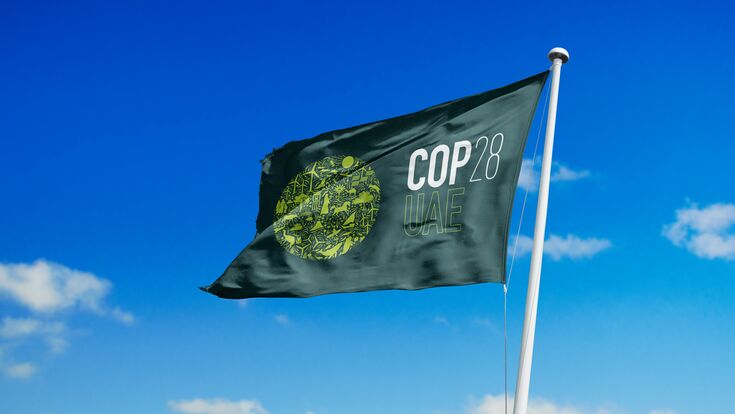Climate Change : COP28: Taking up the fight against climate change with those new technologies

Since the beginning of the year alone, investors worldwide have pumped 490 billion dollars (around 450 billion euros) into corresponding projects and up-and-coming companies working on this topic, according to the management consultancy PwC. Due to the weakening economy and high inflation, this is a decline of 40 per cent compared to 2022, but the drop in investment across all sectors of the economy amounts to 50 per cent.
Below is a selection of new technologies for improved environmental protection:
CARBON CAPTURE
Every year, 37 billion tonnes of carbon dioxide are emitted worldwide through the burning of fossil fuels and by industry. To reduce emissions, this climate-damaging gas is to be captured and stored underground (carbon capture and storage) or used as a raw material for other products.
The high energy requirements and costs of this technology are a major hurdle. In addition, many plants have so far only worked on a small scale. The International Energy Agency (IEA) therefore criticises the oil and gas industry for relying too much on carbon capture and describes this hope as an implausible "illusion".
Nevertheless, this technology is attracting a lot of investor money. For example, the USA is funding two projects totalling more than one billion dollars. The plants are expected to filter out more than two million tonnes of CO2 from the ambient air every year. The Swiss company Climeworks is one of the companies that is focussing on this technology.
NUCLEAR FUSION
Nuclear fusion is seen as the solution to the world's growing hunger for energy. The fusion of atoms releases large amounts of energy. Unlike in nuclear power plants, it produces virtually no harmful radiation or waste. However, the technology required for this is expensive and the energy produced is difficult to utilise.
According to the industry association, global investment in nuclear fusion projects has fallen by around half this year to 1.4 billion dollars. At the same time, however, the number of companies able to raise capital has increased from 33 to 43. In Germany, Proxima and Marvel Fusion, among others, are dedicated to this topic. John Kerry, US Special Envoy for Climate Action, is expected to present a global strategy for nuclear fusion at COP28.
"GREEN" HYDROGEN
In so-called electrolysers, water is split into oxygen and hydrogen with the help of an electric current. The combustion of the latter produces water vapour. If the electricity required for electrolysis is generated from green electricity, this is referred to as "green" hydrogen. If nuclear power is used, it is referred to as "pink" or "purple" hydrogen.
Hydrogen is seen as a beacon of hope for those industries that have not yet been able to do without fossil fuels. These include steel and cement manufacturers in particular. Similar to carbon capture, this technology is expensive and its large-scale use is therefore questionable.
According to PwC, "green" hydrogen and reduced food waste offer the greatest potential for CO2 savings. However, only 3.9 and 0.7 per cent of global investment in climate protection start-ups has so far been channelled into these two areas.
A few weeks ago, the USA granted several hydrogen projects aid totalling seven billion dollars. The industry also receives tax rebates as part of the "Inflation Reduction Act" investment programme.
OTHER TECHNOLOGIES
There are also numerous other technologies that could help the fight against climate change to achieve a breakthrough - if they become established. These include lab-grown meat and food made from insects. Proponents point out that this could avoid a large proportion of the emissions associated with livestock farming. However, the industry recognises that the technical problems of production on an industrial scale and the disgust reflex of many consumers would first have to be overcome.
A few months ago, the authorities in the USA authorised the sale of laboratory chicken meat. It has so far been sold in small portions in high-priced restaurants. In the European Union, some insects are authorised for consumption.
RISING STAR ASIA AND AFRICA
To date, almost half of global climate protection investments have gone to the USA, according to an analysis by experts from the consultancy firm Deloitte. However, other countries are catching up. China, for example, has increased its share more than tenfold to 22 per cent within around ten years. But France, the UK and India are also attracting more and more investors.
In Asia, a particularly large number of start-ups are focussing on biofuels, adds Deloitte manager David Schatsky. In Africa, developers of e-bikes and electric motorbikes are successful. "Entrepreneurship in these regions outside the industrialised nations has the potential to attract even more capital if an ecosystem for climate protection technologies is created."
